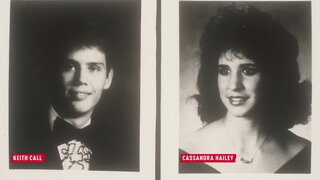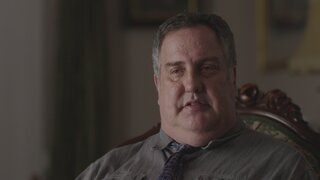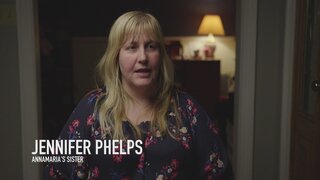Create a free profile to get unlimited access to exclusive videos, breaking news, sweepstakes, and more!
Is A Serial Killer Responsible For The Colonial Parkway Murders — Or Are The Vicious Roadside Slayings Unconnected?
Was a string of 1980s murders in Virginia the work of a brutal serial killer — or unconnected coincidence? Investigators are still seeking an answer.

For over three years beginning in the fall of 1986, a 23-mile stretch of road in Virginia that connects Jamestown to Yorktown became the eerie epicenter of a string of grisly double homicides.
The human carnage — six bodies were found, while two presumed-dead victims have never been recovered — was collectively called the Colonial Parkway Murders.
Although only two of the four crime scenes were directly on the parkway, the other two occurred on nearby roadways, reported The Virginian-Pilot in 2016, around the 30th anniversary of the first slaying.
After years of investigation by the FBI and state and local police, the crimes remain unsolved and are believed by some to be the work of a serial killer.
But are they? And how are the victims — men and women ranging in age from 14 to 27 — connected? Those still-resonant questions beat at the heart of Oxygen’s new two-night special event “Lovers’ Lane Murders,” airing February 11 and February 12 at 9/8c and 10/9c on Oxygen.
Series co-host Maureen O’Connell, a former FBI special agent, sees compelling signs to support the serial killer theory. “Four double homicides in four years, all in lovers’ lanes,” O’Connell says in a series preview clip. It certainly sounds like one killer from such a description.
Proximity and timing are other factors. She adds that each incident occurred “within a 30-mile radius” and all on a “weekend or holiday. As an investigator,” she says, “I cannot ignore the coincidences.”
The victims were all young and killed in pairs. Plus, there were commonalities at the crime scenes. Wallets and glove compartments were found open, as if the victims were reaching for drivers’ licenses or registrations.
That detail has inspired a theory the serial killer was a member of law enforcement or posing as one, reported the Roanoke Times in 2016.
Former prosecutor and series co-host Loni Coombs acknowledges that various law officials and journalists have concluded that all four crimes were likely the work of a serial killer. “But to me,” she says in the preview clip, “there’s obvious differences.”
And those variances — especially the different ways the victims were killed and their bodies were disposed of — make her question the serial killer theory. And she’s not the only one who’s doubted one person could be behind all eight deaths.
Consider the details and timeline of the crimes, according to The Virginian-Pilot:
On October 12, 1986, Cathleen Thomas, 27, and Rebecca Dowski, 21, were found strangled with their throats cut in a parkway pull-off.
On September 23, 1987, David Knobling, 20, and Robin Edwards, 14, were found shot in an Isle of Wight wildlife refuge. His car had been located days earlier, keys still in the ignition and the door open.
On April 10, 1988, Richard “Keith” Call, 20, and Cassandra Hailey, 19, disappeared after a college party. The only thing ever found was his car on the parkway, a few miles from where Thomas and Dowski were murdered.
On September 5, 1989, Annamaria Phelps, 18, Daniel Lauer, 21, disappeared, too. Their car was found at an I-64 rest stop in New Kent County. Hunters discovered their remains in the nearby woods six weeks later, but their bodies were too decomposed by then to reveal how they both died.
Taking stock of the crime scenes, Coombs says, “There’s no fingerprints in common. There’s no DNA in common. There’s no weapon in common. As a prosecutor, I couldn’t put that in front of a jury.”
The divergent opinions show that there’s still room for debate about the crimes that shook the Virginia Tidewater area decades ago.
Katherine Ramsland, Ph.D., professor of forensic psychology at DeSales University in Lehigh County, Pennsylvania and author of “How to Catch a Killer: Hunting and Capturing the World's Most Notorious Serial Killers,” reviewed that case about five years ago, she told Oxygen.com.
“I wasn’t completely convinced by the data I had in front of me that the cases were related,” she explained. In addition to the variances in the way victims were killed, “the missing couple further complicates” drawing definitive conclusions, she added.
On the other hand, the fact that the slayings don’t all mirror the other doesn’t automatically mean that one person couldn’t be behind them. “There are always outliers out there who defy categories and formulas,” said Dr. Ramsland.
Blaine Pardoe, co-author of “A Special Kind Of Evil: The Colonial Parkway Serial Killings,” came away from his book research convinced that the Colonial Parkway Murders are tied to a serial killer, he told Oxygen.com. How the victims’ vehicles were all staged is one nuance leading him to that conclusion.
Victoria K. Hester, his co-author and daughter, agrees and disagrees with Pardoe’s theory, though. She thinks there is more than one serial killer and they worked together, he said. Why? It may have taken two to subdue and control two victims.
“It’s rare to have a pair of killers,” Pardoe added. “I lean toward the theory of one killer because if there were two killers I believe one of them would have already been caught.”
Either way, investigators and loved ones alike hope developments with DNA testing and technology may finally lead to a resolution in the four cases.
Pardoe is optimistic about that long-awaited outcome. “I believe the killer made a mistake. They always leave something at the crime scene, and I believe they will solve this,” he said. “I believe there is DNA evidence and that law enforcement is going to be able to resolve these. Whether they apprehend a live person through DNA remains to be seen.”
To learn more about the cases, watch “Lovers’ Lane Murders,” airing February 11 and February 12 at 9/8c and 10/9c on Oxygen.






























